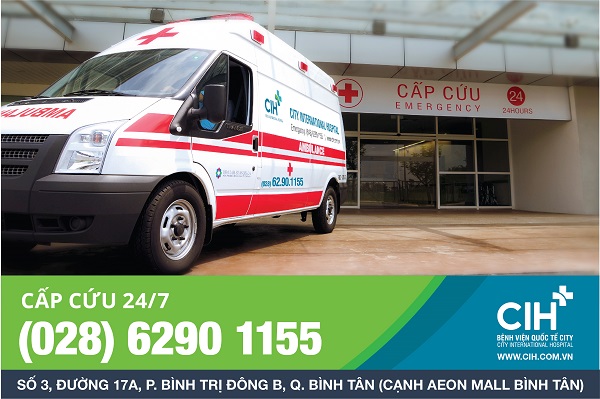Below are guidelines from the Department of Food Safety, Ministry of Health about common signs of poisonous mushrooms as well as the management and prevention of mushroom poisoning.
Recently, there have been many severe poisoning cases caused by eating mushrooms. Most recently, on 11/5, Da Nang Hospital confirmed that 3 people in the same family (from Son Tay district, Quang Ngai province) died after ingesting poisonous mushrooms. Previously, this family went to the field to pick white mushrooms, just sprouting after rain to prepare food.
According to information from the Department of Food Safety, Ministry of Health, Vietnam has about 50 to 100 different poisonous mushrooms. Compared with other types of poisoning, fungal poisoning occurs less frequently in cases, but the mortality rate is often very high.
So how to identify poisonous mushrooms and how to handle mushroom poisoning?
How to identify poisonous mushrooms
The Department of Food Safety said there are three characteristics commonly found in poisonous mushrooms:
- Mushrooms have enough caps, stems, stalks, peduncle rings and stumps.
- Inside the pale pink mushroom trunk, the red mushroom cap has white scales, the mycelium glows during the night.
- The toxic part is in the whole mushroom body (cap, blade, ring, stem, bag of mushroom roots), toxins change seasonally, during the growth of mushrooms and in the environment of soil and climate.
Some types of poisonous mushrooms common in our country:
Amanita verna mushroom
- Grows into clusters or single units on the ground in the forest and some other places ...
- Mushroom hat: White, smooth surface, egg shaped at the beginning, tightly attached to the stem. When mature, flat mushroom caps with a diameter of about 5 - 10 cm. When old, the edge of the hat may be lowered.
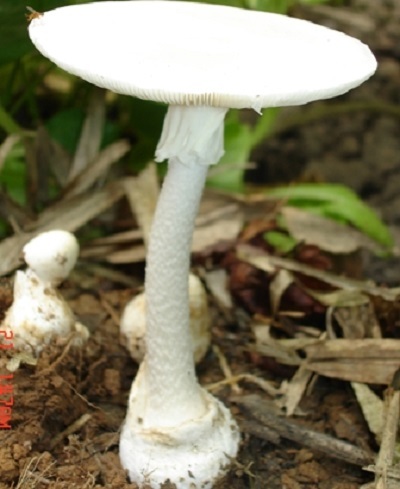
White canopy mushroom (Amanita verna).
- Fungus: White.
- Stalks: White, ring-shaped in the upper segment close to the hat. The legs are bulbous and have a sepals-shaped base.
- Mushroom body: Soft, white, sweet fragrance.
- Main toxin: amanitin (amatoxin) is highly toxic.
Amanita virosa mushroom
- Looks almost like white poisonous mushrooms.
- Grows into clusters or alone on the ground in the forest and some other places.
- Mushroom caps: White, smooth surface, mushroom caps are round and round at the beginning, with cambered edges attached to the stem. When mature, mushroom caps are usually cambered with a diameter of about 4 - 10 cm.
- Fungus: White.
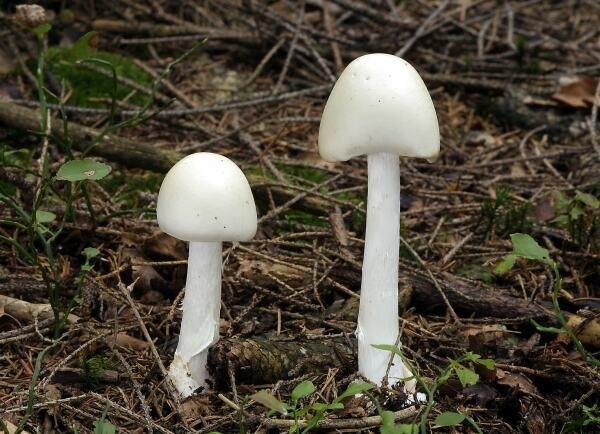
White poisonous mushroom (Amanita virosa)
- Stalks: White, ring-shaped in the upper segment close to the hat. The legs are bulbous and have a sepals-shaped base.
- Mushroom body: Soft, white, unpleasant smell.
- Main toxin: amanitin (amatoxin), highly toxic.
- Gray-brown cap mushroom (Inocybe fastigiata or Inocybe rimosa)
- Grows on the ground in the forest, where there are many rotting leaves and some other places.
- Caps of mushrooms are conical to bell shaped, pointed peaks, with golden to brown filaments radiating from the top of the hat to the edge of the mushroom cap.
- When old, mushroom cap edge was split into separate rays. Mushroom hat diameter is from 2 - 8cm.
- White fungal mold at young color, tightly attached to the stem. When old, the mushrooms are gray or brown, separated from the petioles.
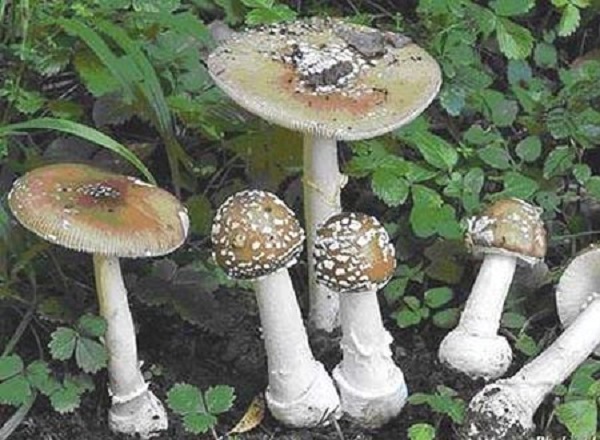
Gray-brown cap mushroom (Inocybe fastigiata or Inocybe rimosa).
- Petiole: Color from slightly white to yellowish brown, 3-9cm long, without stem rings.
- Mushroom meat: White.
- Main toxin: muscarin.
Chlorophyllum molybdites
- Grow in clusters or single units on the edge of the barn, the barn, on the grass, corn fields and some other places.
- Mushroom caps: When young, hemispherical shape is long, pale yellow with small brownish or light gray scales. When mature, mushroom caps are flat or flat, white with a diameter of 5-15 cm. On the surface of the mushroom cap, there are thin brown scales, scales thickening to the top.
- Fungus plate (underside of mushroom cap): When young, it is white, when it is old it has light blue or grayish green, the greener the mushroom is, the clearer it is.
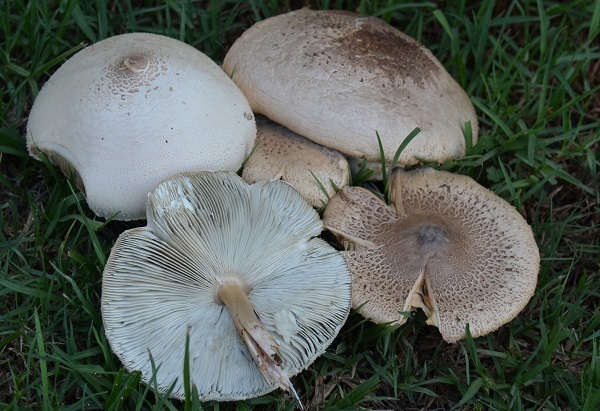
Chlorophyllum molybdites
- Mycelium: Color from white to brown or gray, with a ring at the upper end close to the hat. The stalks are not bulging in the root and do not have a root sheath. My peduncle is 10 - 30 cm long.
- Mushroom body: White.
- Low toxicity, mainly cause digestive disorders.
Treatment for mushroom poisoning
The Department of Food Safety emphasized that as soon as symptoms of fungal poisoning occur, the patients must vomit and then go to the nearest medical center for emergency treatment: gastric lavage, oral activated charcoal. Soon. People who eat mushrooms should also be taken to a health facility even though they have no symptoms.
When coming to the hospital, people need to bring the remaining mushroom samples or food made from the remaining mushrooms to preliminarily identify the mushroom species.
Note, need to determine the time from eating mushrooms to the onset of symptoms of poisoning. If less than 6 hours, people can treat at grassroots level. However, if more than 6 hours, the patient should be transferred immediately to the provincial hospital, where conditions for dialysis.
To avoid mushroom poisoning, the Department of Food Safety recommends that people absolutely do not eat strange mushrooms, wild mushrooms, especially those with full stem rings, the original bag is usually poisonous mushrooms. Only use mushrooms when you're sure it's edible.
Besides, do not try to test mushrooms, definitely eliminate mushrooms when in doubt; Do not pick up mushrooms that have not been spread, because they have not fully disclosed the characteristics of the mushroom and make it difficult to identify poisonous mushrooms.
The newly picked fresh mushrooms should be cooked immediately because if rancid, crush can form a new toxin that causes poisoning. In particular, do not eat mushrooms that have rotten, rancid.
Source Vietnamnet.vn
|
City International Hospital Emergency Department operates 24/24 on all days of the week, including Saturday - Sunday as well as holidays / New Year's Day. The hospital has designed and built a large emergency department area, full of facilities, modern equipment in accordance with international standards with a capacity of up to 10 beds located on the ground floor of the hospital, the entrance to the department. spacious and airy to ensure the smooth and timely export process.
There are many situations when a patient needs emergency medical treatment such as:
If you suspect you or your child may have eaten a poisonous mushroom do not wait for symptoms to occur, contact City International Hospital Emergency Department (CIH) at the emergency number: (028) 6290 1155. |
- Address: No. 3, 17A Street, Binh Tri Dong B Ward, Binh Tan Dist. (Next to AEON Mall Binh Tan), Ho Chi Minh City.
- Operator: (+8428) 6280 3333, ext. 0
- 24/7 Emergency: (+8428) 6290 1155
- Website: https://cih.com.vn/en/
- Fan page: https://www.facebook.com/BenhVienQuocTeCity/
- Email: This email address is being protected from spambots. You need JavaScript enabled to view it.
General disclaimer
Always consult your doctor regarding any concern about your health. Your doctor will be in the best position to give the appropriate medical advice. For suspected undesirable drug reaction and seek medical attention immediately.











